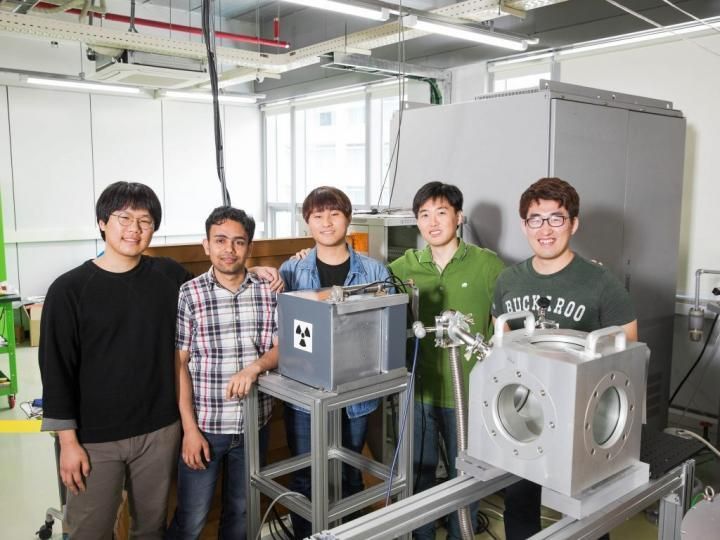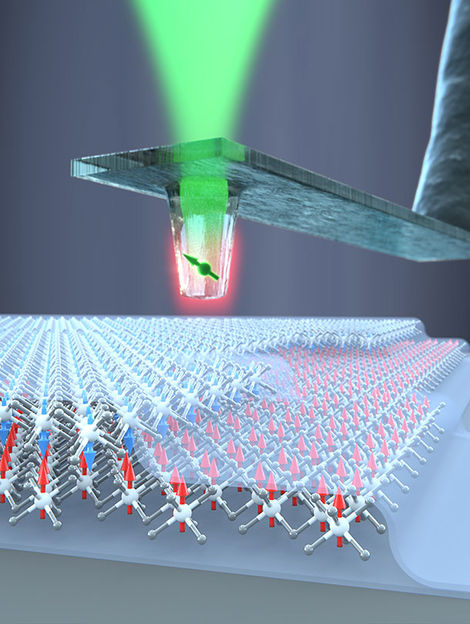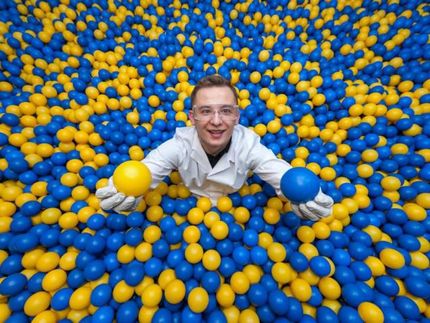Atom interferometer provides most precise test yet of Einstein's gravitational redshift
Scientists measure interference between matter waves separated by 0.1 mm
While airplane and rocket experiments have proved that gravity makes clocks tick more slowly – a central prediction of Albert Einstein's general theory of relativity – a new experiment in an atom interferometer measures this slowdown 10,000 times more accurately than before, and finds it to be exactly what Einstein predicted. The result shows once again how well Einstein's theory describes the real world, said Holger Müller, an assistant professor of physics at the University of California, Berkeley. "This experiment demonstrates that gravity changes the flow of time, a concept fundamental to the theory of general relativity," Müller said. The phenomenon is often called the gravitational redshift because the oscillations of light waves slow down or become redder when tugged by gravity. A report describing the experiment appears in Nature . Müller tested Einstein's theory by taking advantage of a tenet of quantum mechanics: that matter is both a particle and a wave. The cesium atoms used in the experiment can be represented by matter waves that oscillate 3x10E25 times per second, that is, 30 million billion billion times per second. When the cesium atom matter wave enters the experiment, it encounters a carefully tuned flash of laser light. The laws of quantum mechanics step in, and each cesium atom enters two alternate realities, Müller said. In one, the laser has pushed the atom up one-tenth of a millimeter giving it a tiny boost out of Earth's gravitational field. In the other, the atom remains unmoved inside Earth's gravitational well, where time flies by less quickly. While the frequency of cesium matter waves is too high to measure, Müller and his colleagues used the interference between the cesium matter waves in the alternate realities to measure the resulting difference between their oscillations, and thus the redshift. The equations of general relativity predicted precisely the measured slowing of time, to an accuracy of about one part in 100 million (7x10E-9) – 10,000 times more accurate than the measurements made 30 years ago using two hydrogen maser clocks, one on Earth and the other launched via rocket to a height of 10,000 kilometers. "Two of the most important theories in all of physics are Quantum Mechanics and the General Theory of Relativity," noted Müller's collaborator, Steven Chu, a former UC Berkeley professor of physics and former director of Lawrence Berkeley National Laboratory (LBNL). Chu was one of the originators of the atom interferometer, which is based on his Nobel Prize-winning development of cold laser traps. "The paper that we are publishing in Nature uses two fundamental aspects of the quantum description of matter to perform one of the most precise tests of The General Theory of Relativity."
Most read news
Organizations
Other news from the department science

Get the chemical industry in your inbox
By submitting this form you agree that LUMITOS AG will send you the newsletter(s) selected above by email. Your data will not be passed on to third parties. Your data will be stored and processed in accordance with our data protection regulations. LUMITOS may contact you by email for the purpose of advertising or market and opinion surveys. You can revoke your consent at any time without giving reasons to LUMITOS AG, Ernst-Augustin-Str. 2, 12489 Berlin, Germany or by e-mail at revoke@lumitos.com with effect for the future. In addition, each email contains a link to unsubscribe from the corresponding newsletter.
Most read news
More news from our other portals
Last viewed contents

Best performance of organic material for lithium battery anode using materials informatics - Combining empirical knowledge and machine learning with a small experimental dataset
Stacking_(chemistry)
Massive trove of battery and molecule data released to public

Improved remote detection of hazardous radioactive substances
Cut-and-paste zeolites: new, faster method for developing custom microporous materials

Evolutionary algorithm generates tailored “molecular fingerprints” - Research team develops an improved method for explaining machine predictions of chemical reactions
Moscito_(software)


























































